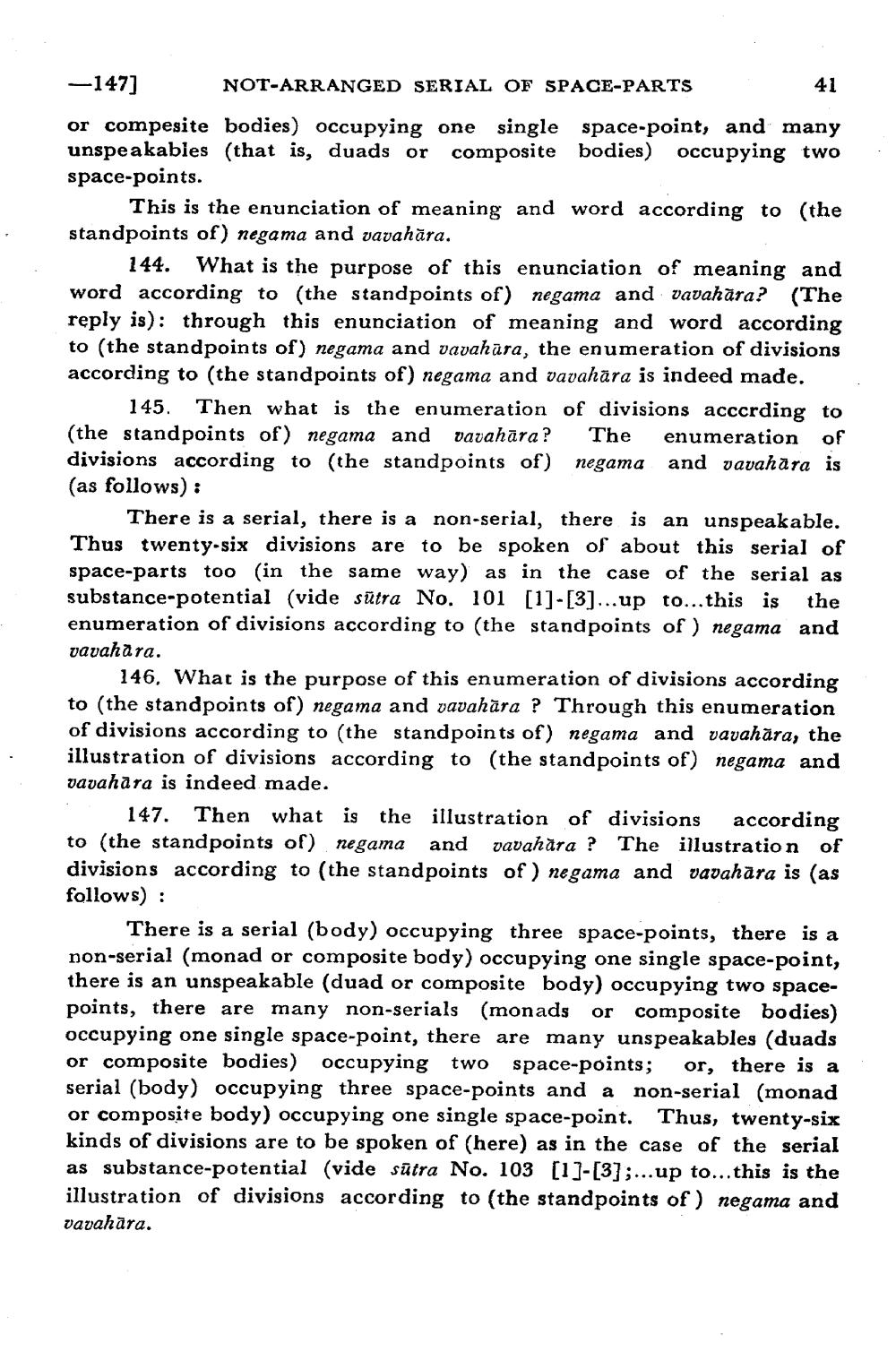________________
-147]
NOT-ARRANGED SERIAL OF SPACE-PARTS
41
or compesite bodies) Occupying one single space-point, and many unspeakables (that is, duads or composite bodies) occupying two space-points.
This is the enunciation of meaning and word according to (the standpoints of) negama and vavahāra.
144. What is the purpose of this enunciation of meaning and word according to the standpoints of) negama and vavahāra? (The
ly is): through this enunciation of meaning and word according to (the standpoints of) negama and vavahāra, the enumeration of divisions according to the standpoints of) negama and vavahāra is indeed made.
145. Then what is the enumeration of divisions according to (the standpoints of) negama and vavahāra? The enumeration of divisions according to (the standpoints of) negama and vavahāra is (as follows:
There is a serial, there is a non-serial, there is an unspeakable. Thus twenty-six divisions are to be spoken of about this serial of space-parts too (in the same way) as in the case of the serial as substance-potential (vide sütra No. 101 [1]-[3]...up to...this is the enumeration of divisions according to the standpoints of ) negama and vavahara.
146, What is the purpose of this enumeration of divisions according to the standpoints of) negama and vavahāra ? Through this enumeration of divisions according to the standpoints of) negama and vavahāra, the illustration of divisions according to (the standpoints of) negama and vavahāra is indeed made.
147. Then what is the illustration of divisions according to (the standpoints of) negama and vavahāra ? The illustration of divisions according to (the standpoints of) negama and vavahāra is (as follows) :
There is a serial (body) occupying three space-points, there is a non-serial (monad or composite body) occupying one single space-point, there is an unspeakable (duad or composite body) occupying two spacepoints, there are many non-serials (monads or composite bodies) occupying one single space-point, there are many unspeakables (duads or composite bodies) occupying two space-points; or, there is a serial (body) occupying three space-points and a non-serial (monad or composite body) occupying one single space-point. Thus, twenty-six kinds of divisions are to be spoken of (here) as in the case of the serial as substance-potential (vide sūtra No. 103 [1]-[3];...up to... this is the illustration of divisions according to the standpoints of) negama and vavahāra.




